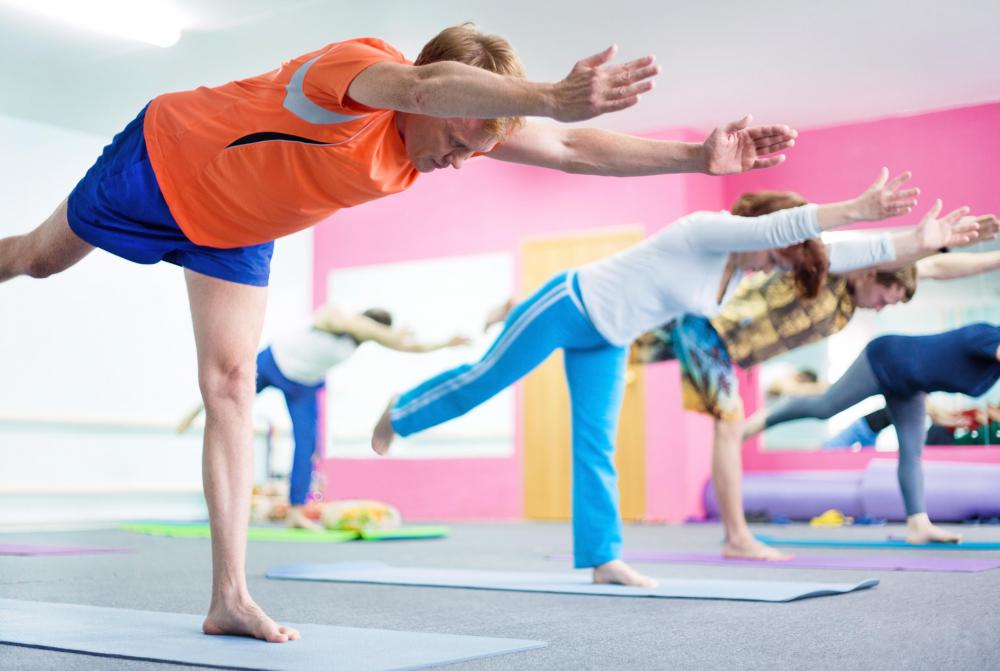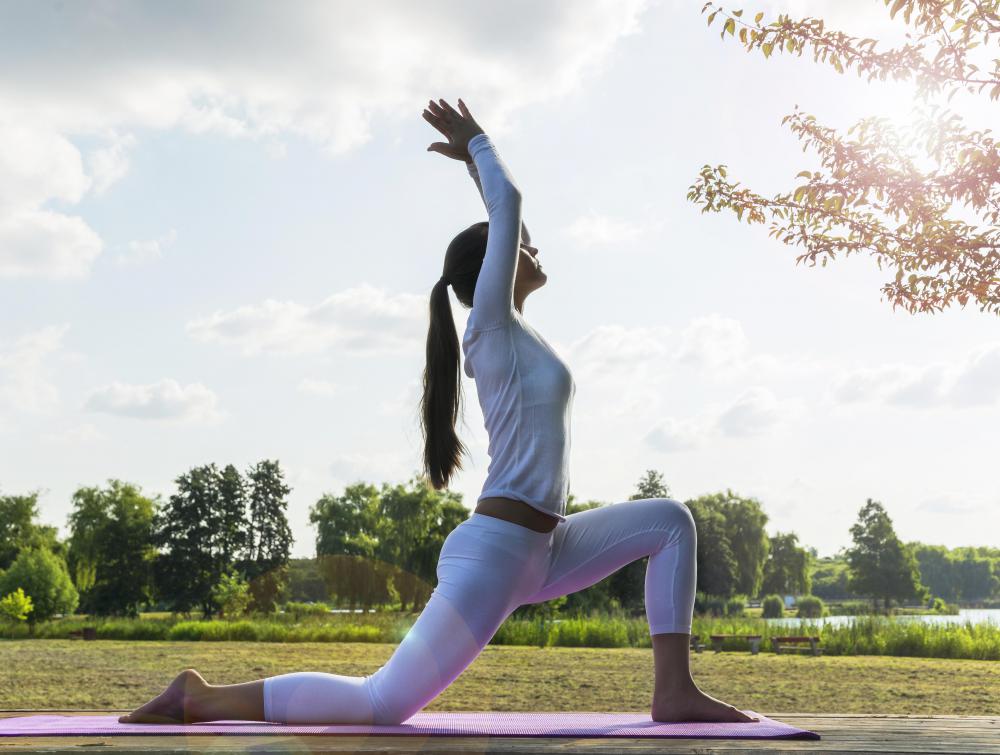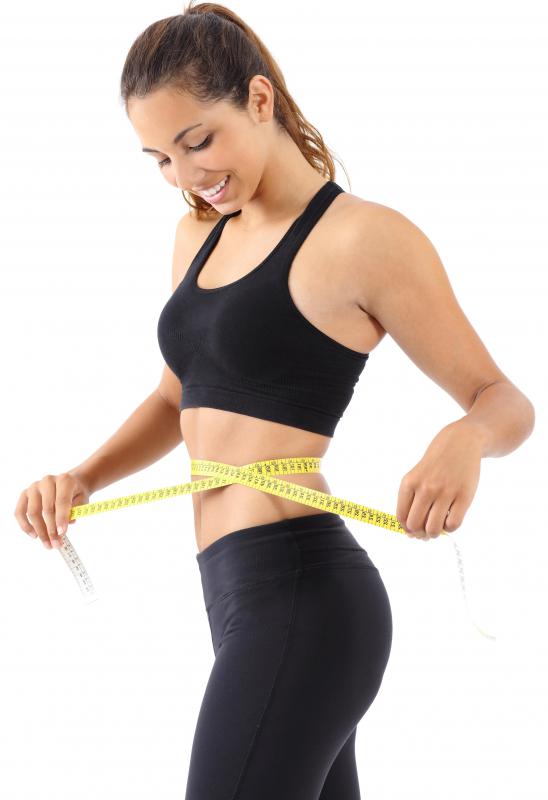At WiseGEEK, we're committed to delivering accurate, trustworthy information. Our expert-authored content is rigorously fact-checked and sourced from credible authorities. Discover how we uphold the highest standards in providing you with reliable knowledge.
What Are Yoga Socks?
Yoga socks are specialty footwear designed to help yoga practitioners better grip either the floor or a specialized mat, usually as a way to improve balance and posture. There tend to be a number of different options and styles, but the presence of some sort of grip or tackiness across the sole is pretty much ubiquitous. Traditionalists or purists often discourage the use of socks, and they aren’t part of yoga as the art is performed for religious and cultural reasons. People who are participating mainly as a form of exercise often favor them, though, particularly those at the beginning levels.
Gripping Abilities

The main goal of any sock in this category is grip. This can come in several forms, and is usually designed to be as seamless and low profile as possible so as to mimic the effect of bare feet, just with added traction. To the layperson yoga may appear to simply be a practice in stretching. In fact, it is much more, including the development of flexibility, muscle strength, and balance. New yoga students often find it hard to properly balance themselves on the floor or on their mat, particularly in warm weather or if the feet become sweaty. Wearing yoga socks may help reduce the number of slips and falls, and can be a helpful training tool.

Sometimes socks are made with a special coating across the entire sole that provides a sticky surface. In other instances, the soles are dotted with small rubber grips in various shapes and sizes that help provide traction. While most socks are thin, manufacturers don’t usually recommend wearing them in shoes. The moist environment of the inner shoe can break down the grips over time, and can make them less effective; and, after all, most users don’t want their feet stuck to the bottom of their shoes throughout the day.
Types and Styles

There are several styles of yoga socks. Some are ankle height while others extend up onto the calf. Some have individual toe sections, much like a glove, with the toes either enclosed or hanging out freely. Other designs have the sock end just before the toes and allow that part of the foot to move freely, while still others have the heel exposed as well, which can give a more realistic approach; in these cases the socks are often likened to training wheels in that they are a tool to build skill and confidence but aren’t designed to be permanent additions to the practice.

Most are made entirely of natural cotton or bamboo, though some synthetic or blended options are also available in many places. Manufacturers often try to design the socks so that they naturally wick moisture away from the feet. In addition to helping feet stay clean and dry, this can also reduce blisters.
Potential to Prevent Injury
The most common reason people use these socks is to help them achieve more complex moves with the confidence of stability and balance, but to an extent they can also help prevent falls that can lead to injury. Some experts also think that the right sock can reduce the danger of strain or sprain by providing a warm surrounding for stretched muscles. A lot of this depends on individual physiology, though, as well as the tension and compression provided by the sock itself. Not all socks are the same in this respect.
Controversy Among Purists

Not all yoga practitioners recommend or even endorse the use of socks, and may claim that it is inconsistent with the core spiritual bases of the art. The yoga that is taught in many fitness centers and studios throughout the world is based on an ancient Indian practice of meditation and is an important element of traditional Hindu beliefs. As performed in Hindu temples and ashrams, yogic practice implies that with practice and self-control, a person can integrate the personal consciousness to become one with the universe. The main idea in this sort of practice is to focus on the self and to learn to channel internal energy, thoughts, and directedness. Wearing socks to improve outward aesthetics isn’t always consistent with these goals.
AS FEATURED ON:
AS FEATURED ON:



















Discussion Comments
@SarahGen-- I personally do yoga barefoot but I don't think that there is anything wrong with using yoga socks. If someone needs them, then they should use them.
And I don't agree that equipment is not needed for yoga. It's almost impossible to do yoga without slipping and discomfort if a yoga mat is not used.
@literally45-- I'm against the use of socks in yoga. There is just no need for it and in order for yoga to be beneficial, I feel that bare feet must touch and feel the ground. This is something that helps balance and when the soles of the feet have contact with the ground, energy is neutralized. If someone has trouble with balance postures, this is a sign of an overactive mind and can be overcome with practice and meditation. Special socks are not the right option.
Yoga has been practiced in Asia for thousands of years. And those who practiced it did not have special equipment like mats and socks. They would practice in nature, on the ground and barefoot. This is still how most Asians practice yoga.
All of these equipment for yoga are just a way for manufacturers to make money. In reality, none of it is needed.
I used to have trouble doing balance related yoga postures before I bought my yoga socks. When I found out that there are special socks for yoga that help the feet grip the floor, I knew I had to get one. These socks have helped me so much and now I'm doing asanas that I could never do before. I think everyone who loves yoga needs to own a pair. It's definitely worth it.
Post your comments